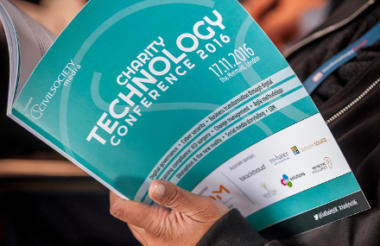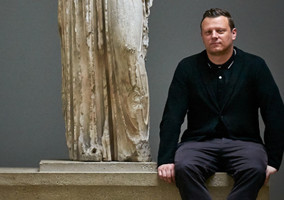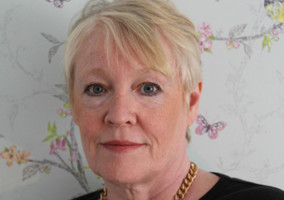Digital and technology leaders gathered in London last week for Civil Society Media’s annual Charity Technology Conference. Kirsty Weakley presents some highlights from the day.
There was plenty of challenge to the charity sector at this year's Charity Technology Conference. Not the least of it was one question: why is digital transformation taking so long in the sector?
To start the day Mary McKenna challenged the sector to think about how it recruits those with digital skills. During the second plenary, in which telecommunications provider KCOM and the Commonwealth War Graves Commission presented a case study, charities heard that digital technology was something absolutely essential. James Warner from KCOM said that “having a digital strategy will soon be as ridiculous as having an electricity strategy”.
After lunch Chris Michaels from the British Museum explained how video and social were the next challenges for online content. And to close there was a lively panel debate about whether the sector is ripe for disruption.
During the day there were a number of workshops covering topics such as cyber security, digital transformation and building digital communities. In many cases the challenge to the sector was the same: adoption must come faster.
Here are some key themes.
The rise of the prototype
Being able to quickly and easily demonstrate how a project is working is key to getting support form senior management, the conference heard. In recent years there has a been a lot of emphasis on the need to adopt a flexible approach.
Tamsin Burwell, head of digital at English Heritage, shared what this means for her charity as it launched its website and a mobile app.
David Ivell, chief information officer at Prince’s Trust, cautioned against using the technology buzzword ‘agile’, saying it can mean “so many different things to different people”.
He uses a ‘rapid prototype’ methodology instead.
Elsewhere, Julie Dodd, head of digital at Parkinson's UK, said that she had found prototyping to be a useful tool to show trustees what is possible by “demonstrating what change can look like”.
Keep it simple
James Kliffen, head of fundraising, and Lee Butler, digital marketing manager at Medecins Sans Frontieres, shared how the rise of mobile technology had impacted on the charity’s ability to raise money.
They revealed that the charity had found that its sign-ups for regular giving were under threat because it had not invested in digital, and has sought to change that.
They said that having good content was key – during the Ebola crisis last year MSF was appearing higher than other news sources because it had informative content ready ahead of the crisis.
MSF recently relaunched its new website in ten weeks and said it did so by “keeping it simple”.
Subscribers to Fundraising magazine can read more about why being on the front line shaped digital transformation at MSF here.
CRM tips
Representatives from three charities, which have recently carried out customer-relationship management software projects, offered some top tips and advice to others.
Ciara Bosworth, head of OneCRM at British Heart Foundation, said her main advice was not to focus on the new to the exclusion of the old. “It’s a really exciting thing to build a new CRM, but you mustn’t forget to keep the lights on,” she said.
She also recommended people “build in flexibility for strategic or environmental change”.
Rohan Putter, deputy director of fundraising at Barnardo’s, suggested that staff need to “feel like they own the project – so it’s not something that is being done to them. When things get tough you don’t want everyone arguing about whose fault it is”.
Simon Capper, head of performance and insight at WaterAid, added that “you don’t need to do everything in CRM” and suggested adding links in the system to other tools that can do it better. He also said you need to “make sure that you put your best people on the project” and use temporary staff to cover routine tasks if needed.
How the conference voted
This year we had the added excitement of an app to accompany the conference. If you attended you can still use this to catch up on the presentations from the day.
We also used it to carry out a number of polls throughout the day. Between 75 and 100 people voted in each one. Don’t worry, nobody voted for Trump, although that may be because we didn’t give them the option to.
Here’s what people said:
As a charity team leader, do you have a clear plan for the ongoing digital transformation of your organisation?
Yes – 44 per cent
No – 56 per cent
Are you confident that you have the right team in place to manage all things digital?
Yes - 31 per cent
No – 69 per cent
Do you feel comfortable in your own understanding of the digital landscape?
Yes – 56 per cent
No – 44 per cent
Is your network fit for purpose and are you making the most of it?
Yes – 39 per cent
No – 61 per cent
Does your charity have an innovation department?
Yes – 21 per cent
No – 79 per cent
Can you innovate without technology?
Yes – 69 per cent
No – 31 per cent
Digital governance and leadership
So if everyone agrees that technology offers charities a fantastic opportunity, why does it still feel like we’re having a lot of the same conversations as we were a few years ago?
The simple answer is to blame the trustees – and this is largely correct. They hold the purse strings but meet only a few times a year.
Often they don’t really know that much about technology and social media, and in some cases aren’t particularly interested. This is where quick and simple prototyping can help to show them, where telling them has failed.
But what this leads to is a much bigger question, and one that we cannot expect our technology conference to answer - is the charity structure fit for the modern world? If not, what is to be done about it? Will the sector be able to rise to the challenges and take advantages of the opportunities if it does not modernise its internal processes and structures?
Bold digital leadership is needed from all levels at the sector so that we can stop talking about how most charities ‘lagging behind’ and start talking about how more of them are ‘leading the way’.
Related articles












